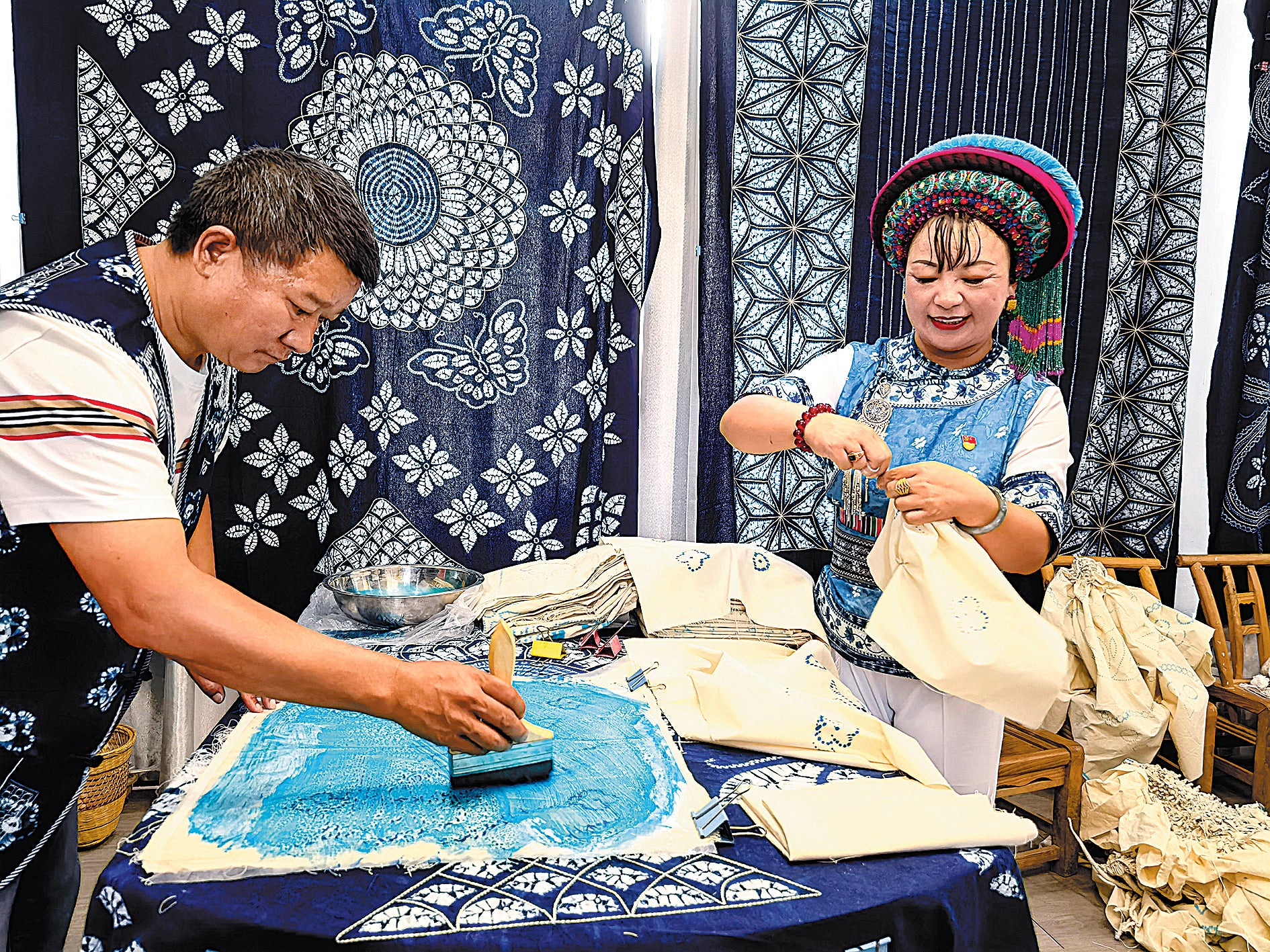Handicrafts bring villages prosperity
THE ARTICLES ON THESE PAGES ARE PRODUCED BY CHINA DAILY, WHICH TAKES SOLE RESPONSIBILITY FOR THE CONTENTS

Ethnic arts and crafts have become a profitable rural industry, lifting villages in Hunan province out of poverty and contributing to rural vitalisation.
About 97.5 per cent of villagers in Hequn, Zhangjiajie city, in the province’s north west, are members of the Bai ethnic group. Many of the Bai people are making a living selling cloth made with tie-dyeing, a method that calls for colours or patterns to be applied to textiles that they use to make their traditional clothing.
About half the villagers in Hequn recently took part in a workshop on tie-dyeing organised by Zhang Pihe, 43, a Bai woman born in Dali, Yunnan province.
Zhang inherited the skill from her grandmother. “Tie-dyeing has been passed on through generations,” Zhang said.
Yang Shuchun, 21, Zhang’s son, is also involved in tie-dyeing, which he learned as a child from his mother.
Yang said he remembers his parents would start work early in the morning, drawing the patterns they liked, brushing on colours, pinching some areas of the cloth and tying them tightly with thread. The dye contains banlangen, a traditional Chinese medicine.
“I was curious about how the patterns were created by blocking the dye from reaching certain areas,” he said.
He is still learning tie-dyeing skills from his parents and plans to start making handicrafts independently in a few years. “I just want to inherit the ethnic arts.”
These days handmade clothes, hats, bags, shoes and other products made with tie-dyeing are sold at wholesale markets, on online platforms and via livestreaming. Prices range from 50 yuan (£6.30) for a bag to 1,200 yuan (£151.60) for a traditional Bai costume.
The Bai ethnic group is one of 55 in Hunan. Combined, there are seven million people from ethnic minority groups, including the Miao and the Tujia, in the province, accounting for about 10 per cent of its population.
Shi Shunlian, former Party secretary of the village of Shibadong in Xiangxi Tujia and Miao autonomous prefecture, has opened a Miao embroidery cooperative.
Given that women in the village excel at creating Miao embroidery, which is a national intangible cultural heritage, she established the cooperative in August 2014 to sell handicrafts outside the green mountains.
In 2018 women from the village began working with the rail rolling stock manufacturer CRRC Group to make handicrafts featuring high-speed railway designs for the company.
“I never expected that we could earn money from the embroidery that was previously only used to decorate our clothing,” Shi said. “The products are now being exhibited to the world, and we can make money by making handicrafts at home.”
Shibadong has been able to use its traditional Miao ethnic specialities as well as agricultural products such as kiwi fruit and peaches grown in the mountains, to help lift the village out of poverty.
The per capita income of the villagers had risen from 1,668 yuan (£210.80) in 2013 to 20,167 yuan (£2,548.1) last year, and their collective income last year reached 2.68 million yuan (£338,600), the Hunan Bureau of Rural Vitalisation said.
Subscribe to Independent Premium to bookmark this article
Want to bookmark your favourite articles and stories to read or reference later? Start your Independent Premium subscription today.